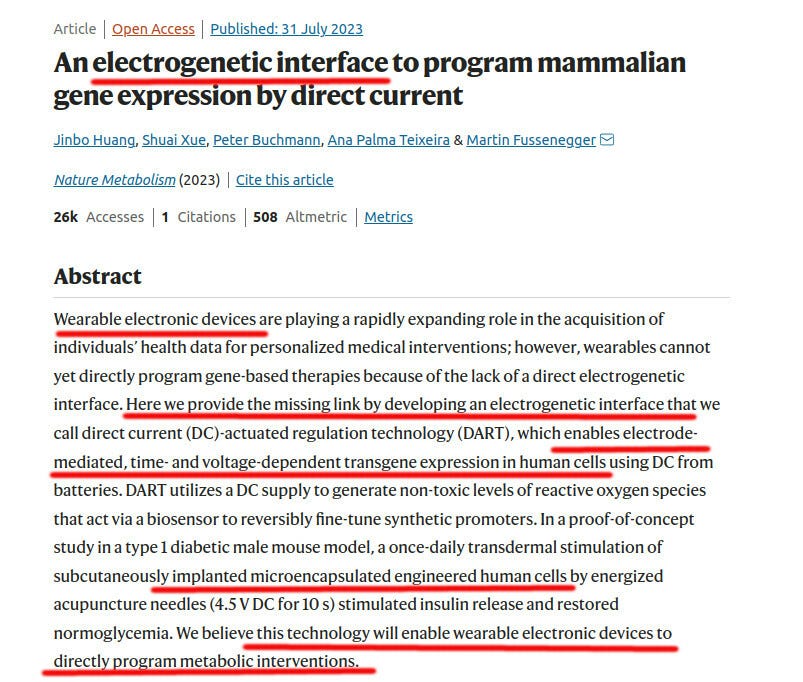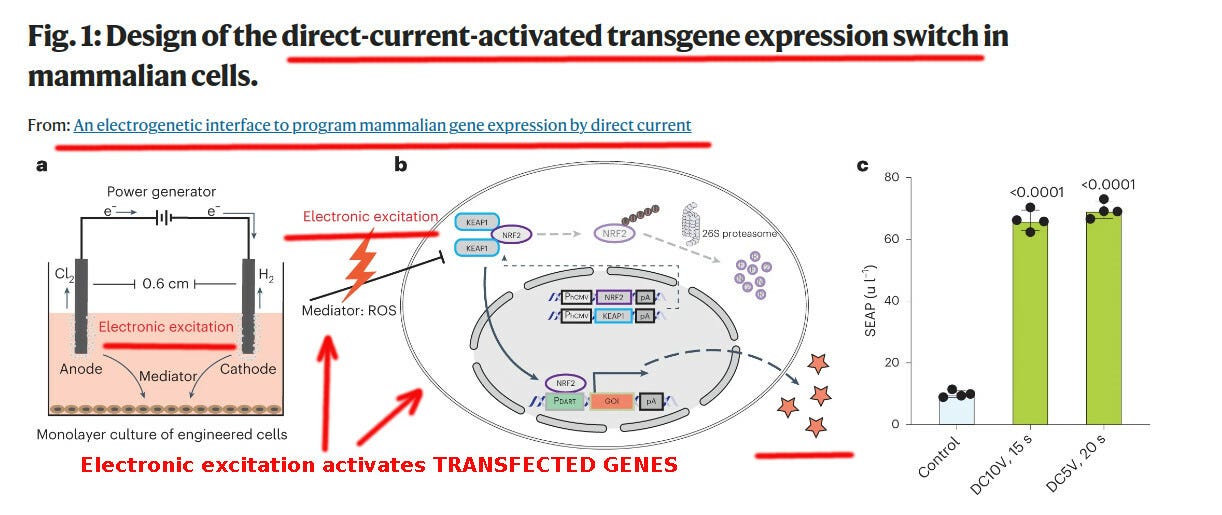Scientists describe a working mechanism to cure diabetes in mice
Can we alter people’s genes via a surreptitious DNA transfection to remotely control their bodily functions? In the past, such discussions belonged to the realm of science fiction, supervillain cartoons, or conspiracy theories.
Not anymore.
A new study published in Nature described a particular transfection of human cells (HEK293 cells) that altered certain genes inside those cells. These reprogrammed human cells, placed inside lab mice for experimentation, would perform a certain biological process when stimulated with an electromagnetic signal externally.
Scientists from ETH Zurich in Basel, Switzerland, took cells from a human HEK293 cell line. They transfected certain genes into these cells and placed them inside live lab mice.
As a result, upon signal produced by electronic excitation, the mice with the transfected genes activated their genetic pathways to produce insulin:
Then, rewiring of NRF2 to synthetic ARE-containing promoters enabled direct and cofactor-free DC-powered fine-tuning of the expression of therapeutic transgenes such as the insulin gene. For a proof of concept, we implemented DART-based remote control of insulin expression in type1 diabetic mice. Stimulation of subcutaneously implanted engineered cells with World Health Organization (WHO)-approved and US Food and Drug Administration (FDA)-licensed acupuncture needle electrodes at 4.5 V DC for 10 s once per day triggered the production of sufficient insulin to attenuate postprandial glycemic excursions and restore normoglycemia.
As the mice selected for the experiment were diabetic, applying the electronic signal to their genetically transfected cells could allow those cells to produce insulin, thus making diabetic mice maintain normal blood sugar!
We can see that people can also be transfected with such genes, making humans capable of new functions turned on and off remotely via electronic signals.
Electronically Controlled Gene-Transfected Bodies?
The possibilities for this technology are endless! Some are good, such as curing diabetes in mice and, someday, possibly, in humans. You can imagine how a diabetic human can have their cells transfected with insulin-producing genes, which would produce said insulin upon a signal from an (expensive and patented) electronic control device. As long as a hypothetical diabetic still has money to rent the remote excitation device, all will be good.
Some possibilities are not as appealing. For instance, we discussed a virus-based transfection of cats that makes them infertile:
It is entirely possible that a similar transfection can make the fertility of cats to be potentially electronically controlled. So an owner of the proper control interface could make a given cat fertile or infertile at will at the flick of a switch.
Can mammals be transfected with genes that, when activated remotely, produce poison and kill the carrier? I hope not!
Will such things be done to humans? Will this end well?
Let us know what you think!
You're currently a free subscriber to Igor’s Newsletter. For the full experience, upgrade your subscription.



